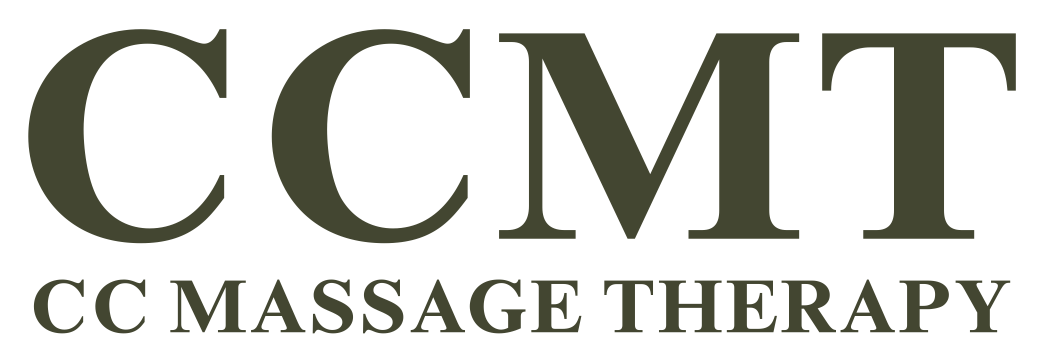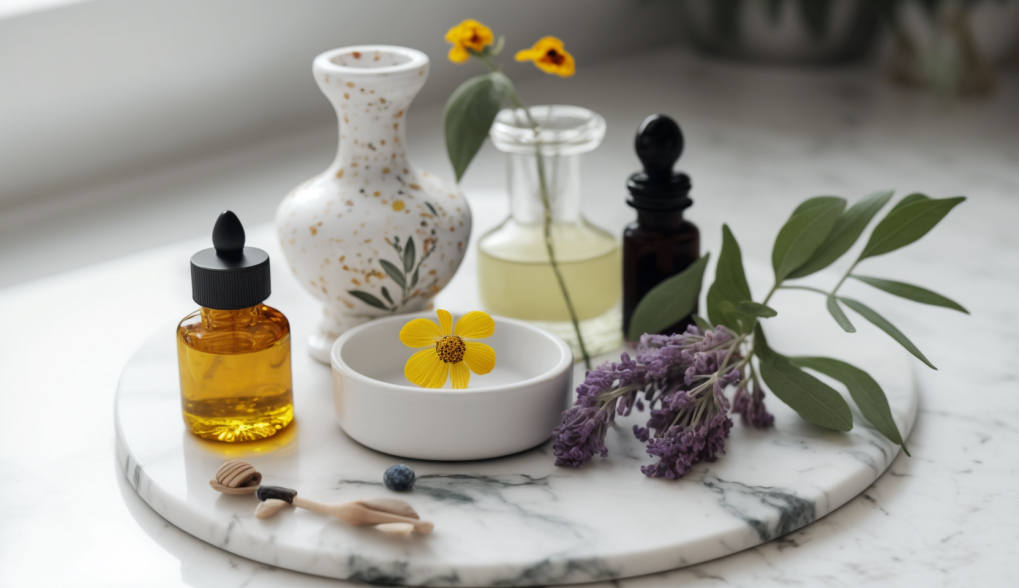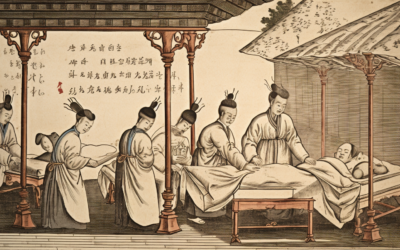The world of massage therapy offers a diverse range of techniques that can be tailored to address specific health conditions. By understanding the unique needs of each individual, massage therapists can develop customized treatments that target the root cause of various ailments, and effectively promote overall well-being. This article will dive into the benefits of tailoring massage techniques for health conditions, explore the science behind these methods, and provide guidance on finding a qualified massage therapist in Canada. If you’re ready to unlock your body’s full potential, read on!
Table of Contents
Introduction
Massage therapy has been used for centuries to provide relief from a wide array of health conditions. By tailoring massage techniques to the specific needs of each individual, therapists can optimize the healing potential of this holistic practice. In this section, we’ll discuss the importance of customized massage techniques for health conditions and the mind-body connection in massage therapy.
Massage therapy has long been recognized as a powerful tool for promoting relaxation and improving overall health. However, as research continues to uncover the many benefits of massage, it has become clear that this ancient practice can do much more than simply alleviate stress. When skillfully applied, massage techniques can target specific health conditions, providing relief from pain, improving circulation, and even enhancing the body’s natural healing processes.
The mind-body connection is a key aspect of massage therapy’s effectiveness in addressing health conditions. Stress and emotional factors can exacerbate many physical ailments, and by creating a deeply relaxing and therapeutic experience, massage can help to balance both the body and the mind. Research has shown that massage can stimulate the release of endorphins, the body’s natural painkillers, and reduce the levels of stress hormones like cortisol.
Key Takeaways:
- Tailored massage techniques can address specific health conditions and promote overall well-being.
- The mind-body connection plays a vital role in the effectiveness of massage therapy.
Common Health Conditions and Tailored Massage Techniques
| Massage Therapy Technique | Common Health Conditions |
| Swedish Massage | Stress, anxiety, depression, low back pain, cancer-related fatigue, sleep disorders, high blood pressure, peripheral arterial disease |
| Deep Tissue Massage | Chronic pain, repetitive strain injuries, fibromyalgia, muscle tension |
| Sports Massage | Sports injuries, muscle strains, sprains, soreness, recovery from athletic events |
| Trigger Point Therapy | Headaches, migraines, chronic pain, muscle tension, fibromyalgia |
| Myofascial Release | Chronic pain, fibromyalgia, headaches, migraines, muscle tension |
| Medical Massage | Pain relief, injury recovery, chronic pain, stress relief, muscle tension, cancer-related fatigue, sleep disorders, high blood pressure, diabetes, low back pain, peripheral arterial disease |
Massage therapy can be customized to target a wide range of health conditions, from chronic pain and stress to circulatory issues and lymphatic congestion. In this section, we’ll explore some common health conditions and the tailored massage techniques that can provide relief.
Chronic pain and deep tissue massage
Chronic pain affects millions of people worldwide, and massage therapy can be a powerful ally in the battle against this debilitating condition. Deep tissue massage is one technique that has been shown to be particularly effective for chronic pain sufferers. By applying firm pressure and slow strokes, deep tissue massage targets the deeper layers of muscle and connective tissue, helping to release chronic muscle tension and alleviate pain. A study found that deep tissue massage was more effective than nonsteroidal anti-inflammatory drugs (NSAIDs) for reducing pain in patients with chronic low back pain
Stress and anxiety relief with Swedish massage
Stress and anxiety are pervasive in modern society, and left unchecked, these emotional states can contribute to a host of physical and mental health issues. Swedish massage, a gentle and relaxing technique, is an excellent choice for those seeking relief from stress and anxiety. With its long, flowing strokes, kneading, and percussion movements, Swedish massage promotes relaxation and improves circulation, helping to soothe the nervous system and reduce stress levels. Research has demonstrated that a single session of Swedish massage can significantly reduce cortisol levels and increase the release of oxytocin, a hormone associated with feelings of well-being and relaxation.
Improving circulation and lymphatic drainage with manual lymphatic drainage
Manual lymphatic drainage (MLD) is a specialized massage technique that can be highly beneficial for individuals with circulatory and lymphatic issues. By using gentle, rhythmic strokes, MLD encourages the movement of lymphatic fluid throughout the body, helping to reduce swelling, boost immunity, and promote the body’s natural detoxification processes. This technique can be especially helpful for those recovering from surgery or dealing with conditions such as lymphedema. A systematic review found that MLD can significantly reduce limb volume and improve overall quality of life in patients with lymphedema.
Key Takeaways:
- Deep tissue massage can help relieve chronic pain by targeting the deeper layers of muscle and connective tissue.
- Swedish massage promotes relaxation and reduces stress and anxiety levels.
- Manual lymphatic drainage improves circulation and lymphatic flow, aiding in detoxification and reducing swelling.
The Role of Aromatherapy in Tailored Massage Techniques
Aromatherapy can be a powerful addition to tailored massage techniques, enhancing the therapeutic benefits of the treatment and creating a truly holistic experience. In this section, we’ll discuss the use of essential oils in massage therapy and highlight some popular essential oils and their benefits.
Using essential oils to enhance massage effectiveness
By incorporating essential oils into a massage treatment, therapists can harness the healing properties of these natural plant extracts to address specific health concerns and enhance the overall massage experience. Essential oils can be blended with massage oils or lotions and applied directly to the skin, or diffused in the air to create a calming and therapeutic atmosphere.
Popular essential oils and their benefits
There are countless essential oils available, each with its own unique properties and benefits. Some popular essential oils used in massage therapy include:
- Lavender: Known for its calming and relaxing properties, lavender is an excellent choice for reducing stress and anxiety.
- Peppermint: With its invigorating and cooling effects, peppermint can help alleviate headaches and soothe sore muscles.
- Eucalyptus: This oil is renowned for its ability to open the airways and support respiratory health.
- Chamomile: Recognized for its soothing and anti-inflammatory properties, chamomile can help ease skin irritations and promote relaxation.
Key Takeaways:
- Aromatherapy can enhance the therapeutic benefits of tailored massage techniques.
- Essential oils can be used to address specific health concerns and create a relaxing atmosphere during the massage session.
The Science Behind Tailored Massage Techniques
The effectiveness of tailored massage techniques for specific health conditions is supported by a growing body of scientific research. In this section, we’ll discuss the physiological effects of massage on the body and review some of the research that supports the use of tailored massage techniques for health conditions.
The physiological effects of massage on the body
Massage therapy can have a profound impact on the body’s physiological processes. Some of the key effects of massage include:
- Increased circulation: Massage stimulates blood flow, delivering oxygen and nutrients to the body’s tissues and helping to remove waste products.
- Reduced inflammation: Massage can help decrease the production of pro-inflammatory cytokines, which contribute to inflammation and pain.
- Improved flexibility and range of motion: By breaking up adhesions and relaxing tight muscles, massage can promote greater flexibility and mobility.
- Enhanced immune function: Massage has been shown to increase the activity of natural killer cells, which play a crucial role in the body’s immune response.
Research supporting tailored massage techniques for health conditions
There is a growing body of scientific research that supports the use of tailored massage techniques for specific health conditions. Some noteworthy findings include:
Finding a Qualified Massage Therapist in Canada
Finding the right massage therapist is crucial for achieving optimal results when it comes to tailored massage techniques for specific health conditions. In this section, we’ll discuss the credentials to look for in a massage therapist and provide tips for selecting the right therapist for your needs.
Credentials to look for
In Canada, massage therapists must be registered with a provincial regulatory body in order to practice legally. These regulatory bodies ensure that therapists have completed a minimum level of education and training, and adhere to professional standards of practice. When searching for a qualified massage therapist, look for the following credentials:
- Registered Massage Therapist (RMT) or Licensed Massage Therapist (LMT)
- Membership in a provincial regulatory body, such as the College of Massage Therapists of Ontario or the College of Massage Therapists of British Columbia
It’s also a good idea to inquire about any additional certifications or training the therapist may have in specific massage techniques, such as deep tissue massage, manual lymphatic drainage, or aromatherapy.
Tips for selecting the right therapist for your needs
Finding the right massage therapist for your needs involves more than just checking their credentials. Here are some tips to help you select the perfect therapist:
- Ask for recommendations from friends, family, or healthcare providers.
- Read online reviews and testimonials to get a sense of the therapist’s reputation and level of expertise.
- Schedule a consultation or phone call to discuss your health condition and goals, and to get a feel for the therapist’s communication style and approach.
- Consider the therapist’s location, availability, and rates to ensure they align with your needs and budget.
Key Takeaways:
- Look for a Registered Massage Therapist (RMT) or Licensed Massage Therapist (LMT) who is a member of a provincial regulatory body.
- Seek recommendations, read reviews, and schedule consultations to find the right therapist for your needs.
Preparing for Your Tailored Massage Session
Proper preparation is key to ensuring a successful tailored massage session. In this section, we’ll discuss how to communicate your health conditions and goals with your therapist, and how to create a comfortable environment for your massage.
Discussing your health conditions and goals with your therapist
Before your massage session, it’s important to have an open and honest conversation with your therapist about your specific health conditions and goals. This will help them tailor the massage techniques to your individual needs and ensure a safe and effective treatment. Be prepared to discuss:
- Your medical history, including any relevant diagnoses, surgeries, or injuries.
- Your current symptoms and level of discomfort or pain.
- Your goals for the massage session, such as pain relief, stress reduction, or improved flexibility.
Setting expectations and creating a comfortable environment
To get the most out of your tailored massage session, it’s essential to create a comfortable and relaxing environment. Here are some tips to help you prepare:
- Discuss any preferences or concerns you have regarding the massage, such as pressure, draping, or the use of aromatherapy.
- Wear comfortable, loose-fitting clothing to your appointment.
- Arrive a few minutes early to give yourself time to relax and complete any necessary paperwork.
- Speak up if you experience discomfort or pain during the massage, or if you need adjustments to the pressure, technique, or positioning.
Key Takeaways:
- Communicate your health conditions and goals with your therapist to ensure a tailored massage experience.
- Prepare for your massage session by discussing preferences, wearing comfortable clothing, and arriving early.
Safe and Effective Massage Experience
Safety and effectiveness are essential components of a successful massage experience. In this section, we’ll discuss contraindications and precautions for specific health conditions, and the importance of communication during the session for optimal results.
Contraindications and precautions for specific health conditions
While massage therapy can be highly beneficial for many individuals, there are certain health conditions for which massage may be contraindicated or require special precautions. Some examples include:
- Acute inflammation or infection: Massage can potentially spread infections or exacerbate inflammation, so it’s best to avoid massage during these times.
- Blood clot risk: Deep pressure massage can dislodge blood clots, which could lead to serious complications. If you have a history of blood clots or are at risk, inform your therapist.
- Cancer: Massage can be helpful for cancer patients, but it’s important to work with a therapist who is trained in oncology massage and to get clearance from your healthcare provider.
Always discuss your health conditions with your therapist, and consult with your healthcare provider if you’re unsure whether massage is safe for you.
Communication during the session for optimal results
Open communication with your massage therapist is essential for achieving the best possible results from your tailored massage session. Here are some tips for effective communication during your session:
- Speak up if you experience discomfort, pain, or need adjustments to the pressure, technique, or positioning.
- Let your therapist know if you have any specific areas that require attention or should be avoided.
- Provide feedback on the effectiveness of the massage techniques being used, and discuss any adjustments that may be needed.
Key Takeaways:
- Be aware of contraindications and precautions for specific health conditions when considering massage therapy.
- Maintain open communication with your therapist during your session to ensure optimal results.
?Unlock Your Body’s Full Potential: Embrace the Healing Power of Massage
Massage therapy can be a powerful tool for unlocking your body’s full potential and embracing a healthier, happier lifestyle. In this section, we’ll provide encouragement to prioritize self-care and well-being, and discuss the long-term benefits of tailored massage techniques.
Encouragement to prioritize self-care and well-being
In our busy, modern lives, it can be easy to overlook the importance of self-care and well-being. However, prioritizing activities like massage therapy that promote relaxation, stress reduction, and overall health can have profound effects on your quality of life. By scheduling regular tailored massage sessions, you’re investing in your own health and happiness.
The long-term benefits of tailored massage techniques
Incorporating tailored massage techniques into your regular self-care routine can provide numerous long-term benefits, including:
- Improved mental health: Massage can help alleviate symptoms of anxiety, depression, and stress, leading to better overall mental well-being.
- Enhanced immune function: Regular massage can support the immune system, helping you stay healthier and more resilient to illness.
- Increased flexibility and mobility: With consistent massage therapy, you may experience improved flexibility and range of motion, leading to better physical function and reduced risk of injury.
Key Takeaways:
- Prioritize self-care and well-being by scheduling regular tailored massage sessions.
- Long-term benefits of tailored massage techniques include improved mental health, enhanced immune function, and increased flexibility and mobility.
Frequently Asked Questions
- Can I receive a massage if I have a specific medical condition?
- It depends on the condition. Some medical conditions may be contraindicated for massage, while others may benefit from tailored massage techniques. Always consult with your healthcare provider and discuss your medical history with your therapist to ensure a safe and effective massage experience.
- How often should I receive a tailored massage for my health condition?
- There are no standard guidelines for the number of massages one can get, but a massage therapist or a doctor may be able to recommend a frequency and duration that work best for individual needs. Generally, one massage a week is recommended, especially if one has a specific health condition or injury.
- Are there any risks associated with massage therapy?
- The risk of harmful effects from massage therapy appears to be low, but there have been rare reports of serious side effects such as blood clots, nerve injury, or bone fracture. Certain medical conditions such as cancer, fractured or broken bones, and blood clots may increase the risk of experiencing negative side effects from massage. “Deep tissue” massage can cause trouble and may lead to mild risks and side effects of massage therapy. Other risks linked to the profession of massage therapy include ganglion cysts, ligament injuries, carpal tunnel syndrome, and nerve irritation in the hands. However, massage therapy is generally considered safe when performed by a trained and licensed professional.
- How can I maximize the benefits of my massage session?
- To maximize the benefits of a massage session, there are several things one can do. Drinking plenty of water before and after the massage can help the body eliminate toxins that have been dislodged during the massage and replace lost fluids. Eating light foods and resting after the massage can also help. Taking a warm bath or shower before the massage can help relax the muscles, making it easier for the therapist to work on those kinks.
- Can I combine massage therapy with other treatments for my health condition?
- Yes, massage therapy can be combined with other treatments for health conditions. Massage therapy can be combined with chiropractic care to speed up healing and improve results. Combining massage therapy with psychotherapy, medicines, and other therapies can also help improve the patient’s condition. Massage therapy can be used to treat muscle tightness or soreness, and it can be combined with chiropractic care to improve the range of motion and relieve pressure on the nerve.
Sources
- Field, Tiffany. “Massage Therapy Research Review.” Complementary Therapies in Clinical Practice, vol. 20, no. 4, Elsevier BV, Nov. 2014, pp. 224–29, https://doi.org/10.1016/j.ctcp.2014.07.002. Accessed 1 May 2023.
- Majchrzycki, Marian, et al. “Deep Tissue Massage and Nonsteroidal Anti-Inflammatory Drugs for Low Back Pain: A Prospective Randomized Trial.” The Scientific World Journal, vol. 2014, Hindawi Publishing Corporation, Feb. 2014, pp. 1–7, https://doi.org/10.1155/2014/287597. Accessed 1 May 2023.
- “Swedish Massage Could Lower Stress Hormone Cortisol: Study.” HuffPost, HuffPost, 25 Nov. 2012, www.huffpost.com/entry/massage-stress-swedish-cortisol-white-blood-cells-oxytocin_n_2160329. Accessed 1 May 2023.
- Vairo, Giampietro L., et al. “Systematic Review of Efficacy for Manual Lymphatic Drainage Techniques in Sports Medicine and Rehabilitation: An Evidence-Based Practice Approach.” Journal of Manual & Manipulative Therapy, vol. 17, no. 3, Maney Publishing, Jan. 2009, pp. 80E89E, https://doi.org/10.1179/jmt.2009.17.3.80e. Accessed 1 May 2023.
- “Home.” Cmto.com, 2023, www.cmto.com/. Accessed 1 May 2023.
- “Home – September 2022 – College of Massage Therapists of British Columbia.” College of Massage Therapists of British Columbia, 7 Oct. 2022, www.cmtbc.ca/. Accessed 1 May 2023.
- Silver, Natalie. “How Often Should You Get a Massage?” Healthline, Healthline Media, 14 Nov. 2019, www.healthline.com/health/pain-relief/how-often-should-you-get-a-massage. Accessed 1 May 2023.
- “Massage Therapy: What You Need to Know.” NCCIH, NCCIH, 2016, www.nccih.nih.gov/health/massage-therapy-what-you-need-to-know. Accessed 1 May 2023.
- Dougherty, Heather. “6 Simple & Effective Ways to Maximize Your Massage | Pure Spa.” Pure Spa, 2 Oct. 2017, amblerpurespa.com/2017/10/6-ways-to-maximize-your-massage/. Accessed 1 May 2023.
- Hatch Chiropractic. “Combining Massage Therapy & Chiropractic Speeds Healing.” HATCH CHIROPRACTIC & WELLNESS, 17 Mar. 2022, parkerchiropracticandacupuncture.com/combining-massage-therapy-chiropractic/. Accessed 1 May 2023.
- Collier, Jennifer. “Collaborative Therapeutic Services.” Collaborative Therapeutic Services, 16 Nov. 2018, www.therapycts.com/blog/2018/11/12/psychotherapy-amp-massage-therapy-combined-improves-your-overall-health-and-well-being. Accessed 1 May 2023.










